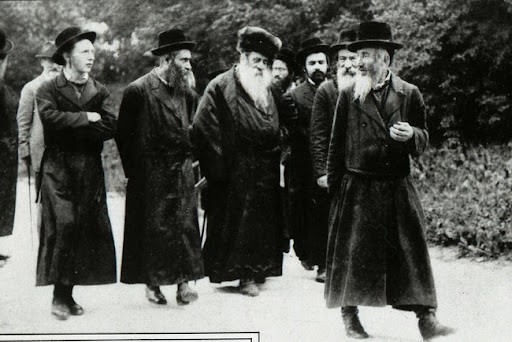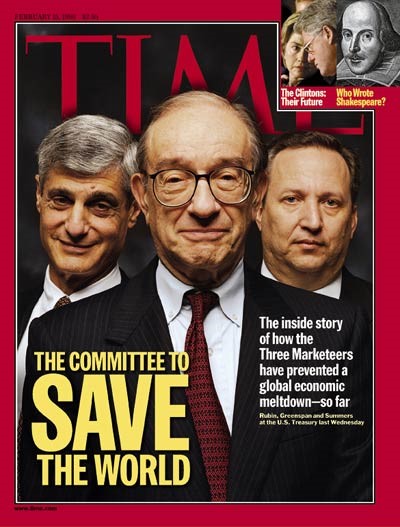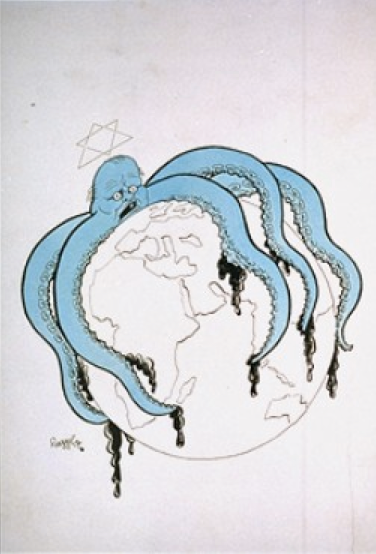Israel: A Refuge for Swindlers

Criminal proceeds recovered from a mass Israeli-run fraud ring by French police, 2020.
“Most of the Jews are thieves.” Thus said the founding father of Israel, David Ben Gurion, when he heard about Jewish soldiers carrying Persian rugs from freshly looted Arab properties during the Arab-Israeli war. If he were around today, I don’t think Ben Gurion would find any reason to radically change his opinion, and he probably wouldn’t be surprised to find out that Israel has become a hub of international fraud. A recent hit for Netflix is the documentary The Tinder Swindler, which charts the outlandish career of Israeli con artist Shimon Hayut, the son of a rabbi, who manipulated a large number of predominantly Scandinavian women into collectively handing over more than $10 million. Hayut’s modus operandi is that old favorite of Jewish white-collar criminals — the Ponzi scheme, though Hayut inflected it with a romantic twist. Using the alias Simon Leviev on the dating app Tinder, Hayut told his gullible victims that he was the son of Lev Leviev, CEO of one of the world’s largest diamond traders. He would initially lavish the women with gifts and trips on private jets (funded by a previous victim), before introducing the idea that he was under threat from unspecified enemies, that his financial accounts had been inexplicably locked, and that he needed “loans” from the women that he would repay many times over when an “imminent deal” worth many millions was completed. The women were pressured into requesting, and then extending, bank loans in their own names, often until they were as much as $300,000 in debt. Once Hayut had extracted the maximum possible funds from a woman, he would begin using some of it to groom a new victim. Moving from woman to woman, and country to country, Hayut lived a lifestyle of private jets, international travel, caviar, and designer clothes until a Norwegian newspaper finally helped secure his arrest in Greece in 2019 for using a fake passport. He was then sent to Israel, where authorities released him after just five months. He remains a free man in Israel, and appears as wealthy as ever.
While the now-viral Netflix documentary is very interesting and well-made, it does a very poor job of contextualizing and framing Hayut’s behavior. Hayut’s career of fraud is presented solely in terms of the perils of online dating, and, ludicrously, as a kind of feminist revenge tale (despite the fact the women fell into Hayut’s clutches in part through their own thirst for a lavish lifestyle, and the final justice served on Hayut was ridiculously weak to say the least). Very little is made of the fact Hayut began his career in fraud as a teenager, sparking questions of cultural influence, and there is no comment at all on the peculiar manner in which Hayut seemed to target Scandinavian women in particular. But the more egregious oversight is surely that Hayut fits incredibly well into a pattern that is absurdly common — the ubiquity of Israeli con artists of international reach, and their habit of finding a very accommodative justice system in the State of Israel.
An Israeli Specialty
International fraud of all kinds is an Israeli specialty. Israel’s Money Laundering and Terror Financing Prohibition Authority receives frequent requests for information from financial intelligence units in at least 19 countries around the world. The main crimes that are the focal point of these requests are “money laundering, fraud, particularly investment scams, binary options and forex scams, bribery and corruption, forgery and illegal gambling.” If there is a way for someone to be parted from their money, you can be sure there is an Israeli working very hard to accomplish it.
In June 2021, an operation led by German police secured the arrest of ten Jews of various nationalities for operating fake investment sites that defrauded European investors of around $36 million. In a fraud scheme that Europol said was “organized mainly by Israeli nationals,” the criminals operated the fake investment sites Tradorax, Tradervc, Kayafx, Kontofx and Libramarkets. Tradorax used the platform supplied by Israel’s SpotOption, which was charged with fraud by the US Securities and Exchange Commission in April 2021. According to Europol, the Jewish network lured thousands of victims through advertising on social media and search engines. These victims were then encouraged to invest in high-risk options, CFDs or cryptocurrencies. However, according to German police, the money was never actually invested but simply taken by the Jews involved. During raids in several countries, police seized electronic devices, real estate, jewelry, high-end vehicles and approximately $2.4 million in cash.
The case was reminiscent of the story of the Canadian-Israeli Cartu brothers. In May 2020, the Ontario Securities Commission brought civil charges against David, Jonathan, and Joshua Cartu for soliciting Canadians to trade binary options. The trio scammed residents of Ontario alone out of $1.4 million, but the total value of their globally-operated scheme was estimated at $233 million. The brothers live lavishly today in Israel, safe in the knowledge that “Israeli prosecutors have yet to indict a single binary options suspect on charges of fraud.” The Times of Israel points out that the brothers’ story is only part of a much wider scenario in which “hundreds of companies in Israel employed thousands of Israelis who allegedly fleeced billions out of victims worldwide.”

8 Israelis arrested in the Philippines in 2018 for operating a multi-million dollar scam
Five months ago, 26 Israelis were arrested for running a cryptocurrency fraud scheme that targeted US investors. The suspects, known as the ‘Wolves of Tel Aviv,’ were said to be marketing products and investments, without providing returns, and keeping the victims’ money. According to a police statement, “all of the 26 suspects of the alleged fraud are residents of Israel, and the victims all live abroad.” The Israeli news station i24News commented that “Israel has been a major hub of online fraud in recent years.” A month after the arrest of the ‘Wolves of Tel Aviv,’ a further eight Israelis were arrested, including Moshe Hogeg, who owns the Beitar Jerusalem soccer club. Israeli police said the group were detained on suspicion of “of cryptocurrency fraud of as much as hundreds of millions of U.S. dollars.”
A Criminals’ Paradise
A poor history of complying with extradition requests together with generous tax breaks for millionaires has resulted in Israel, and Tel Aviv in particular, being perceived as a criminals’ paradise. Remarking on Israel’s “massive fraudulent online and scam industry” and its potential to “undermine Israel’s economic reputation and stoke anti-Semitism,” the Times of Israel pointed out that a 2008 piece of legislation had acted as a “a nudge and a wink to would-be tax evaders and money launderers worldwide to settle in Israel and launder their money here.” The law grants a 10-year tax exemption on income earned abroad to olim hadashim (new immigrants) as well as toshavim hozrim vatikim (returning residents who have lived abroad for at least 10 years) and other eligible new residents. It also gives a 10-year exemption on reporting earnings abroad to people in these categories. It’s a magnet for Jewish thieves.
Last week, plastic surgeon David Morrow and his wife Linda, dubbed “The Jewish Bonnie and Clyde,” faced the American justice system two years after it was discovered the pair had been operating one of the most extensive and sickening health care frauds in California history. In total, the Morrows are thought to have cost insurance companies between $25 million and $65 million for procedures that were medically unnecessary. According to the Jerusalem Post,
They were active and highly respected members of the Orthodox Jewish communities in Beverly Hills, Los Angeles and Palm Springs and very generous contributors to Jewish causes. … They were arrested in California on charges of cheating health insurance companies of more than “tens of millions of dollars for cosmetic procedures that were not medically necessary,” according to the US Attorney’s Central District of California office of the Department of Justice. Add to that a guilty plea of conspiring to commit mail fraud and filing a false tax return, Dr. Morrow was in huge trouble. He was sentenced in absentia to 20 years in federal prison and had his medical license revoked. In her ruling, Judge Josephine L. Staton noted that Morrow’s “greed knew no bounds,” and that he showed an “utter disregard for patients’ well-being and safety.”
The pair were sentenced in absentia because they quickly liquidated their assets and moved to Israel where they could be among their co-ethnics and not have their wealth probed or questioned. According to locals in Israel, before the FBI finally orchestrated a rare extradition (for Linda — David is still fighting the case from an Israeli prison) “they were very active in the congregation, went to shiurim (classes) and synagogue functions.”
In 2017, the Times of Israel commented on the arrest of “35 individuals for allegedly running a network of scam boiler rooms.” The gang operated secret call centers inside residential apartments in the cities of Ashkelon, Ashdod, and Netanya, defrauding people in Europe and North America with a variety of different scams. One method was the CEO scam, where the fraudsters impersonated senior executives in a European company and persuaded employees to wire money to the Jews’ Israeli bank accounts. Other employees called companies in Europe selling goods and services that never materialized. A government prosecutor worried that “The phenomenon has become a national scourge in both Israel and abroad. It is causing damage to the reputation of the state of Israel as well as to Jews in other countries.” The Times of Israel remarked that many of those arrested were Jews from America and France, and that they were assisted by “thousands of Israelis.”
The most prominent example, of course, is the so-called “sting of the century,” in which over 1 billion euros was stolen via a tax scam between November 2008 and June 2009 from the French government. The theft was carried out by French Jews Arnaud Mimran, Marco Mouly, and Samy Souied from a Tel Aviv office. The trio were assisted by a significant number of co-ethnics, with the Times of Israel reporting that “six of the defendants were tried in absentia and are believed to be living in Israel.” In a May 2016 interview with the Times of Israel, Laurent Combourieu, director of investigations for the the Autoritй des marchйs financiers (AMF), France’s securities authority, said that there is overlap between the French-Israeli citizens who were involved in tax fraud carried out against the French government from Israel, and the perpetrators of the ongoing wave of online trading fraud targeting French speakers. In the past six years, according to the Paris prosecutor, French citizens had lost 4.5 billion euros to online trading and CEO scams, with many of these perpetrated from Israel.
That Israel is a hub for Jewish international criminality is further indicated by a random sampling of the bank accounts of new immigrants who had moved to Israel between 2008–2012, carried out by the Israeli state comptroller. It was found that “one in six were found to have irregular activity that caused the bank to flag them for suspected money laundering.” In 2013, the OECD Global Forum on Transparency and Exchange of Information for Tax Purposes pressured Israel to cancel the exemption from filing tax returns by new immigrants and veteran returning residents, in an effort to remove what many saw as a clear incentive to international criminality. Israel agreed to change their legislation in May of that year, but almost nine years later it has yet to do so. In the International Narcotics Control Strategy Report (INCSR) issued by the U.S. State Department, Israel is discussed as a “a major money-laundering country.” The report adds that
Israel’s ‘right of return’ citizenship laws mean that criminal figures find it easy to obtain an Israeli passport without meeting long residence requirements. It is not uncommon for criminal figures suspected of money laundering to hold passports in a home country, a third country for business, and Israel.
Some Considerations
Writing in Mein Kampf, Hitler argued during a discussion of Zionism that “What [Jews] really are aiming at is to establish a central organization for their international swindling and cheating. As a sovereign State, this cannot be controlled by any of the other States. Therefore it can serve as a refuge for swindlers who have been found out and at the same time a high-school for the training of other swindlers.” All things considered, this is obviously a very prescient comment that has an undeniable ring of truth in light of the facts presented above. Far from being an example of fortune-telling, however, the prediction rests on what would today be regarded as certain anti-Semitic assumptions based on stereotypical traits associated with Jews.
The first of these assumptions is that Jews have a special relationship with, or interest in, money. Assuming an ethnic group has a special relationship with, or interest in, money would obviously lead one to predict a number of things. The group might be, on average, wealthier than other groups. It might produce more billionaires. Its criminality might also be reflected less in violent offences than in those most directly correlated with the acquisition of wealth. By most metrics, Jews are indeed wealthier than other groups. In regards to crime, there is also a clear skewing towards wealth acquisition. In 1971 A. Menachem of the Berkeley School of Criminology published a study in Issues in Criminology titled “Criminality Among Jews: An Overview.”[1] In this study, Menachem argued that ‘the Jewish crime rate tends to be higher than that of non-Jews and other religious groups for white-collar offenses, that is, commercial or commercially related crimes, such as fraud, fraudulent bankruptcy, and embezzlement.”
In 1988, Yale University’s Stanton Wheeler published “White-Collar Crimes and Criminals” for the Yale Law School Legal Scholarship Repository. Among Wheeler’s findings were that while Protestants and Catholics were under-represented among white-collar criminals relative to their share of the population, Jews were over-represented to a very large degree (2 percent of the population, 15.2 percent of white-collar convictions). Wheeler states that “It would be a fair summary of our data to say that, demographically speaking, white-collar offenders are predominantly middle-aged white males with an over-representation of Jews.” While Stanton’s statistics are enlightening in themselves, a more detailed picture emerges in David Weisburd’s Yale-published Crimes of the Middle Classes: White-Collar Offenders in the Federal Courts (1991). Here Weisburd informs us that although Jews comprise only around 2 percent of the United States population, they contribute at least 9 percent of lower category white-collar crimes (bank embezzlement, tax fraud and bank fraud), at least 15 percent of moderate category white-collar crimes (mail fraud, false claims, and bribery), and at least 33 percent of high category white-collar crimes (antitrust and securities fraud). Weisburg’s updated data showed that overall, Jews were responsible for an astonishing 23.9 percent of financial crime in America.[2] Given the statistical data, not to mention the well-charted historical trajectory of Jewish financial behavior,[3] the argument that a Jewish predilection for financial misdeeds is a mere “canard” is unsustainable.
Desiring to acquire wealth, and actually acquiring it either legitimately or illegally, are obviously two different things. Jews are equipped for wealth acquisition, including criminal wealth acquisition, through the same background traits that facilitate their efficiency in social and political activism: ethnocentrism, intelligence, psychological intensity, and aggression.[4]
Ethnocentrism clearly plays a large role in international Jewish scams based in Israel. Many of these large-scale frauds are perpetrated by groups consisting of Americans, Bulgarians, Canadians, Romanians, Italians, and so on, whose only substantial common ground is their shared ethno-religious background. Criminal activity is inherently risky, so the level of trust among individuals from such varied national groups is all the more astonishing. Coupled with the almost exclusive targeting of outgroups (U.S. citizens, Canadians, Europeans, and others), the clannish quality of these Jewish groups drawn from the diaspora and based in Israel emphasizes the strength of Jewish ethnocentrism as a foundational base for Israeli international financial crime. In a further demonstration of Jewish ethnocentrism, or trust in one’s co-ethnics, the flight of many international Israeli swindlers to Israel, or their “disappearance” in the state, suggests a level of comfort and expectation from other Jews. Jews who have defrauded outgroups really do expect the government and state of Israel to be their refuge, and very often, through lenient sentences or lack of investigation, they are proved correct in having that expectation.
Intelligence is also key to the success and perpetuation of Israeli-based international fraud. Many of the schemes discussed above are relatively complex, requiring high levels of understanding of international financial markets, banking practices, legal loopholes, differing national standards and legislation, web and software design, search engine optimization, and all of the skills associated with money laundering. As mentioned above, Israelis are responsible for some of the biggest thefts in the financial history of several nations, often involving government-level fraud. These frauds have been executed thanks to the input of large numbers of highly intelligent and multi-skilled Jews who dedicated themselves to the criminal acquisition of wealth.
This extreme dedication to wealth acquisition is obviously driven by significant psychological intensity. In many cases, the frauds required an extraordinary level of audacity, e.g., involving the impersonation of major CEOs or even government figures. In one such example, in 2019 an Israeli scam operation obtained around $90 million after impersonating French foreign minister Jean-Yves le Drian, calling African heads of state, ambassadors, clergy and business figures, and asking them to help France pay ransom for French citizens abducted by ISIL or other terrorist groups in Syria. The impersonator donned a custom-designed silicone mask of the French minister’s head and spoke to his targets via Skype from an office decorated with the French flag and a portrait of French Prime Minister Emanuel Macron. The four ringleaders were eventually arrested in Netanya, which seems to be second only to Tel Aviv in the number of international scams it has hosted. The French were sufficiently incensed for an Israeli police officer to tell a local judge that ““This is a case with international diplomatic repercussions. This is not an ordinary case but one with great international sensitivities that has caused a diplomatic incident between our two countries.” The Times of Israel laments that “An Internet search for ‘scam’ and ‘Israel’ in French yields hundreds of articles, many of which are accompanied by anti-Semitic slurs in the comments section. … Despite the damage such fraudulent activities are doing to Israel’s reputation, Israeli law enforcement has made very few arrests and prosecuted even fewer suspects in the decade or more since the phenomenon first arose.”
Finally, Israeli international financial crime requires aggression. An interesting aspect of The Tinder Swindler involved the manner in which Shimon Hayut dropped the veil once he realized a particular woman had given him all the money she could or would. Threats and insults were immediate. The fundamental drive behind most of the discussed Jewish International scams is aggressive, involving forms of coercion and manipulation against a backdrop of callous disregard and disdain for the targeted outgroups. These aggressive aspects, of course, only highlight those instances in which some of the ill-gotten proceeds, as in the case of the Morrows for example, generously find their way to Jewish charitable causes — which brings us full circle to ethnocentrism.
The concern shown by the Israeli press, and some government officials, that such activity will lead to an increase in anti-Semitism is based for the most part on the implicit understanding that “anti-Semitic” assumptions about the traits associated with Jews (special interest in money, ethnocentrism, intelligence, psychological intensity, and aggression) have a basis in fact. Such concerns also imply the fear that wider knowledge or discussion of these large-scale frauds based in Israel will undo many decades of propaganda that has convinced outgroups that such assumptions are false or bigoted, and that Israel is a natural friend and ally to Western nations. The reality is that Israel is happy to welcome internationally looted funds into its economy, and cares little for the opinion of other nations. The nation’s founder wouldn’t be surprised.
[1] A. Menachem, “Criminality Among Jews: An Overview,” Issues in Criminality, Volume 6, Issue 2, (Summer 1971), 1-39.
[2] D. Weisburg, Crimes of the Middle Classes: White-Collar Offenders in the Federal Courts (Yale University Press, 1991), 72
[3] For example, across Europe, between 1881 and 1914, Jews were over-represented in bankruptcy, forgery, fraud and libel. See P. Knepper, The Invention of International Crime: A Global Issue in the Making, 1881-1914, (Palgrave MacMillan, 2010), 80. The trend, of course, went much further back in history.
[4] K. MacDonald, “Background Traits for Jewish Activism,” The Occidental Quarterly: A Journal of Western Thought and Opinion (Summer 2003): 1-37.











